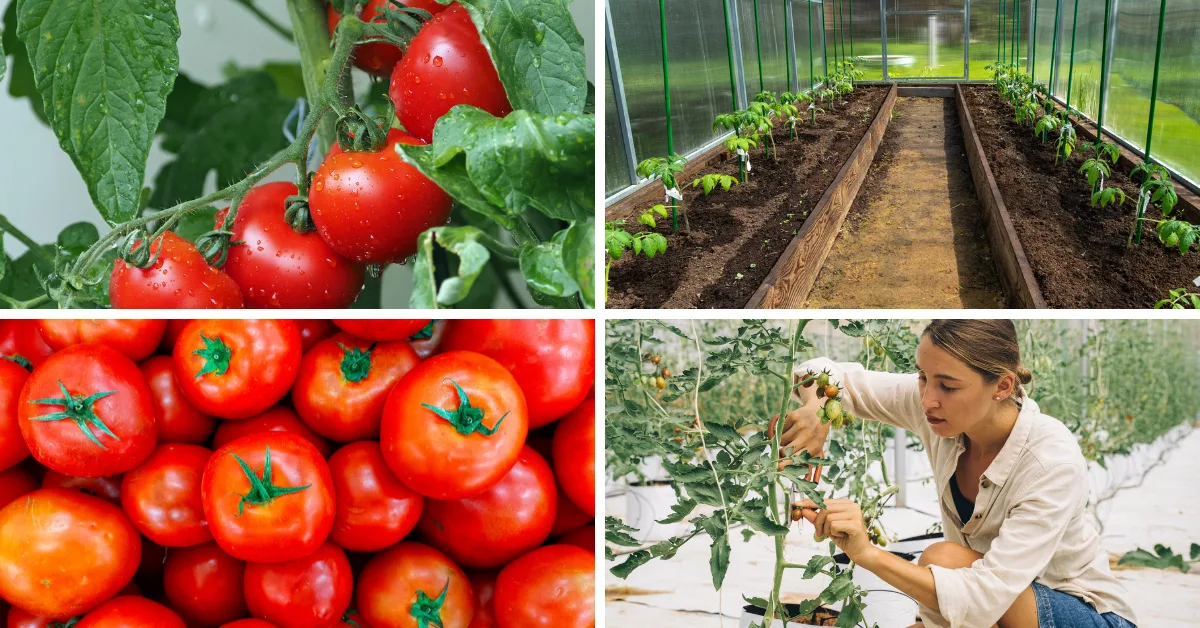Stop Overwatering: A Complete Guide to Watering Tomato Plants at Every Growth Stage

Watering tomato plants sounds simple—until you’ve either underwatered and watched your leaves curl, or overwatered and ended up with yellowing stems and mushy roots.
It’s one of the most common dilemmas gardeners face. The problem? There’s no one-size-fits-all approach. How often you water tomato plants depends on the plant’s stage, the climate, the soil, and sometimes even your own instincts.
Let’s break it down—stage by stage—so you can better understand what your tomato plants really need.
Table of Content
Watering Tomato Plants the Right Way—Why Timing and Technique Matter
Tomatoes at each stage of growth need different levels of hydration. But beyond quantity, the when and how of watering tomato plants can dramatically impact their health, fruit yield, and disease resistance…
At the Seedling Stage: Keep Soil Gently Moist
In the early days, watering tomato plants is less about quantity and more about consistency. Seedlings have shallow roots and can’t access deeper moisture yet. If the soil dries out, they suffer quickly.
At this point, it’s best to keep the top layer of soil lightly moist—not wet. Some gardeners mist daily; others prefer bottom watering to avoid soggy leaves. Either method works, as long as you’re paying attention.
If the surface feels dry but the soil underneath is still moist, it’s better to wait. Constant moisture without saturation is the sweet spot.
Not sure how much water your container tomatoes need? Try this Indoor Plant Watering Calculator.
Right After Transplanting: Hydrate Without Drowning
When you transplant tomatoes into bigger pots or garden beds, they go through a bit of a shock. That’s when watering tomato plants becomes even trickier.
Some gardeners give them a deep watering right after transplanting. Others argue that it’s better to let the roots explore a bit before another soak. Both approaches have their reasons.
A practical middle ground: water them well after transplanting, then wait a few days before watering again—letting the soil breathe without drying out completely.
According to research from the University of California Agriculture and Natural Resources, tomato plants benefit most from consistent, deep watering during their fruiting stage to avoid splitting and blossom-end rot. Their extension guide emphasizes maintaining even moisture in the soil rather than watering by a strict schedule.
During Active Growth: Water Deeply, Less Often
As tomato plants get established, their roots grow deeper, and so should your watering strategy. This stage is about watering tomato plants deeply, allowing moisture to reach those lower roots.
In moderate climates, watering once or twice a week might be enough. In hotter areas or sandy soils, you may need to water every other day. Container-grown tomatoes usually need more frequent watering than in-ground plants.
Some gardeners claim watering less often makes the fruit sweeter. Others insist that consistent moisture is the key to avoiding problems like blossom-end rot. Both may be true in different gardens. What matters is knowing your soil and watching how the plant responds.
During Flowering and Fruiting: Be Consistent
When the plant begins to flower and set fruit, watering tomato plants becomes more about precision. Too much water, and you risk split tomatoes. Too little, and you might get dry, underdeveloped fruit—or worse, no fruit at all.
Aim for even soil moisture. Avoid the extremes. It’s okay to let the top inch dry between waterings, but don’t wait until the plant droops. The stress might affect fruit production.
This is also the stage where many gardeners start to fine-tune their watering routine. Some water in the morning only, to prevent fungal issues. Others check soil depth using their finger or a moisture meter.
And yes—some tomato growers swear by mild drought stress to concentrate flavor. If you’re adventurous, try easing off water slightly once fruits begin to mature. Just watch for signs of wilting.
Balanced watering is just part of the equation—get your nutrients right with our NPK Fertilizer Calculator.
Tips from Real Gardeners
- “I water every morning at 7am without fail. Keeps things consistent.”
- “I used to water daily, but backing off actually improved my yield.”
- “It’s less about schedule, more about checking the soil. If it’s dry two inches down, it’s time.”
There’s no perfect way. And perhaps that’s the point. Gardening isn’t just science—it’s observation, trial and error, and a bit of intuition.
Final Thoughts: There’s No Perfect Formula
The truth is, watering tomato plants well is more of an art than a rulebook. What works for one garden might be totally wrong for another. Even seasoned gardeners find themselves adjusting routines based on weather, plant behavior, or instinct.
Some weeks, you’ll water every day. Others, you’ll wait patiently. What matters is paying attention—watching the leaves, checking the soil, and not being afraid to get your hands dirty.
Your tomato plants are talking. All you have to do is listen.




